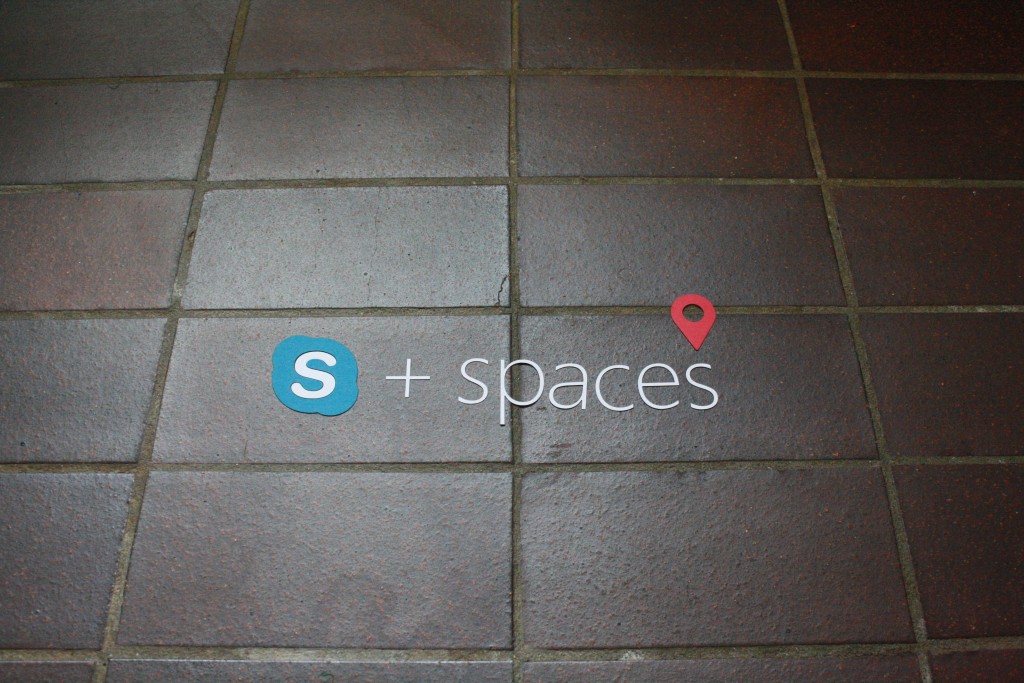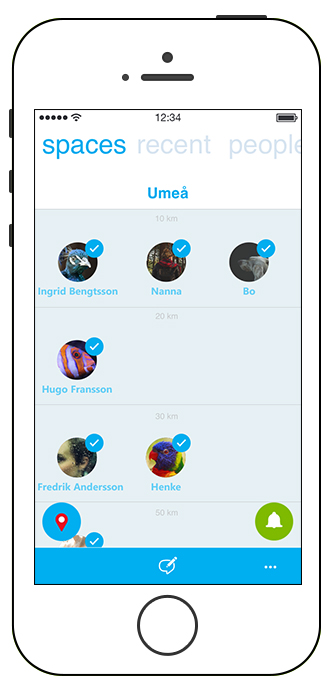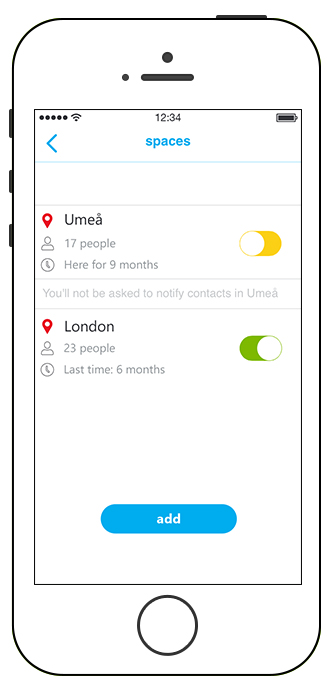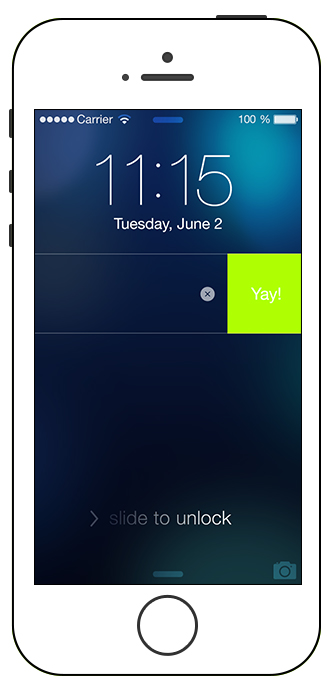Another important aspect for me was to explore and try new creative methods.
In this sense, the focus was in revealing and making visible group dynamics and generating ideas around it.
Ethnographic Design Research: how & why
Interviewing and observing people can be complicated, as there are many aspects to consider before having the initial contact with people. In our case, we found it necessary to discuss who we were interested in talking with and how we would approach the interviews. Rather than going for University Students like ourselves, we decided to focus on groups with a shared interest who met weekly. We decided to focus on groups with a shared interest who met frequently.
Luckily Studiefrämjandet were able to set us in contact with a group of Role play gamers who were part of SVEROK (swedish board game organization). The second group was found via Hamnmagasinet youth center, who informed us that the most active group was ‘Vi unga gycklare’, which was a group of jesters meeting 1-2 a week. Having these well defined groups, we then formulated a research question we would use to structure our questions and interviews:
“How do private codes and group dynamics occur in groups?”
It was important to get to know them as people rather than users. We had two sessions with each group, where the first interview was done in a focus group format with a duration of roughly 2 hours. The second session was conducted as a more individual talk, as we then could ask for personal reflections on topics from the first interview. In general we kept the interviews semi-structured, as we wanted the format of the interview to feel natural and not scripted.
The role players
This is a video we edited trying to condense the dynamics we found in the group.
Design Ethnography Summary (group two)
The Jesters are from the beginning a small group of friends that used to hang out at a local café. At the moment the jesters has turned into a formal organization partly founded by the municipality’s youth program.
This is the video that ries to show them as a group.
Research summary: findings & conclusions
We aimed for getting to know them as deeply as possible so we interviewed each group twice and in almost all cases as a group and also each member individually. We stayed with them learning to do some acrobatics and playing a short role play game in order to share their interests and be closer to them.
During the interviews, concerning group dynamics, we were surprised of how intimate some answers were, how much they opened themselves in front of us and how honest they were (we think) telling us their private stories. We also grasped a bit of their group dynamics; we wanted to know what is it that keeps them together over the years. It called our attention how important routines were for them as well as a minimum commitment with the others. We also had the chance to have a glimpse of their different views on the same topic and some small conflict points between members. We observed some unwritten rules in both groups and both groups considered themselves as open. Finally, we think that there were different roles played by the different members and that those roles changed over time for different reasons.
Concerning asynchronous communication, we had some insights about their patterns and purpose of use. For example, how often, why and what for they used e-mail, Facebook, Skype and other applications like Dota 2, Snapchat.
Idea generation
Four methods were used to structure the ideation, as it was important for us to explore different methods to learn about their pros and cons. The four we ended up trying were: A Heuristic Ideation Technique (Tauber, 1972), 6-3-5 (Rohrbach, 1969), Lateral thinking (Creativeminds, 2002) and Forced conflict (Creativeminds, 2002). A benefit from these methods was that we managed to think beyond the brief and explore inspiring thoughts. Instead of being fixated on the topic of asynchronous communication: Feeling & Expression, we wanted to dive in to our data and exhaust our minds from all possible ideas.
When the ideas started to come short, we moved on to categorizing the ideas into meaningful topics. We quickly did an affinity diagram (Rogers, Sharp and Preece, 2011, p.286), knowing that some categorized naturally would overlap and had to be relabeled as we moved on. The initial categories spanned from emotionless communication to enriching the group dynamic. But it helped to create an overview of the core of the individual idea, which was an important step towards choosing four ideas for our concept gateway presentation.
First Idea Description Video
Time and space conditional messages was one of the three categories that we brought with us to the concept gateway. Within this category we had two ideas, that differed in how users were supposed to engage with time and space.
Second idea description video
Group visualization was the second category, which focused on how group dynamics could be embedded into text messaging. The video questions why conversations are just a list of bubbles, and we propose ideas on how to move away from the traditional interpretation of messaging.
Concept video
We know why most people use skype today. It is to keep in touch with family and friends far away. Skype is not necessarily used when you are actually going to meet them. Our concept builds on the geolocation information, the patterns of you and your contacts movements. Suggesting that you notify or contact your friends when you happen to be in ‘close’ proximity.
The interface
- + spaces contacts list located in map
- + spaces contacts list ordered by distance to user
- +spaces settings
- + spaces notification of friend around
- + spaces response to friend around
Imagine that you live in USA but you used to study in Umeå. You still have some close friends there but you have lost contact with most of them. This summer you are going back to Umeå for a wedding of a close friend. When you land,Skype will detect that you left your regular bubble and ended up in the same city as many of your skype contacts. Skype will then notify you that you have a lot of friends here and that you maybe should send out message to them, telling them that you are here and would like to meet up. If you choose to accept, you will get the possibility to see roughly how far away your friends and contacts are. Selecting all or a few to send a message to. They can then take the initiative to contact, suggesting a meeting or just wish you a welcome back.
Design process video





